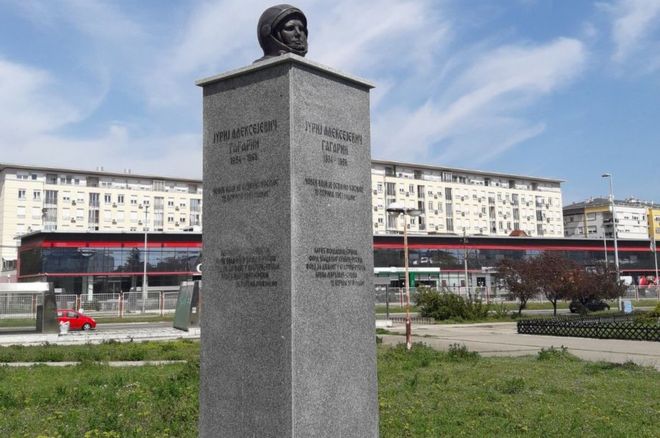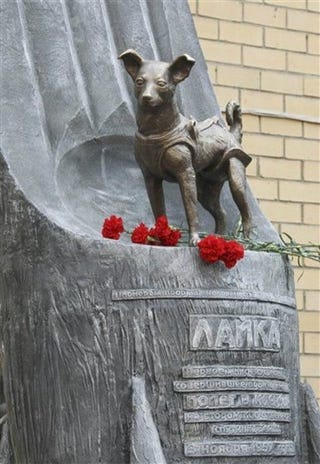Kremlin vetoes new inquiry into mystery death of Yuri Gagarin
By Andrew Osborn in Moscow
Published: 12 April 2007
The Kremlin has vetoed a move to launch a fresh investigation into the death of Yuri Gagarin, the first man in space, despite aviation specialists' belief that they have unravelled one of the 20th century's greatest enigmas.
The rebuff comes as Russians celebrate Cosmonauts' Day today, the anniversary of Gagarin's historic flight around the Earth on 12 April 1961. That foray, which lasted just 68 minutes, was a milestone in the space race between the Soviet Union and the US. But Gagarin was destined to a short, controversial life.
On 27 March 1968, Gagarin died in a mysterious plane crash while on a routine training mission in a MiG-15 with his flight instructor, Vladimir Serugin, just outside Moscow.
The results of the official investigation that followed were hypothetical and did not explain exactly what happened and why.
Investigators were only able to conclude that "the most probable cause" of his death was a sudden in-flight manoeuvre that sent the MiG into a nosedive from which it was impossible to recover.
They suggested that the pilots had been forced to swerve sharply to avoid a collision with a weather balloon or to avoid cloud cover.
The vague nature of the commission's findings led some experts to question Gagarin's competence as a pilot and created an information vacuum that has since spawned endless conspiracy theories.
One of the most insulting has the two men drunk on vodka, and losing control of the plane. Gagarin found fame hard to deal with after his return from space, it is argued, and had become a heavy drinker.
Other theories have been no less far-fetched: that he was abducted by aliens, that he survived the crash and died in a Soviet psychiatric ward in 1990, that Serugin killed them both because he was jealous of Gagarin, or that Gagarin staged his own death, had plastic surgery and disappeared.
There have also been suggestions that the "accident" was arranged by the Soviet leader at the time, Leonid Brezhnev, who apparently felt threatened by Gagarin's fame and was embarrassed by his alcohol-fuelled philandering.
But Igor Kuznetsov, an aviation engineer involved in the 1968 investigation, thinks that he and his colleagues have solved the enigma after conducting their own investigation using modern methodology.
In an interview with The Independent, he said he was convinced that Gagarin and Serugin died in a tragic accident and argued that the doomed plane's final movements differed radically from what had previously been thought.
According to the experts' version, the cockpit was not hermetically sealed because of a partially open ventilation panel, which forced the pilots urgently to reduce their altitude as an emergency measure.
The fact that the panel was open was not suspicious or the result of human error, he insists, but was nevertheless the reason why the two men died.
In the process of reducing their altitude at a rate of 145 metres per second, a speed that was then considered acceptable but which has since been shown to be dangerous, the two men passed out altogether before the plane crashed into the ground.
Mr Kuznetsov and 30 other eminent experts have petitioned President Vladimir Putin to sanction a new investigation into the incident, based on their findings.
But the Kremlin has said it does not believe the experts' theory and sees no grounds to question the original findings.
"What original findings are they talking about? There were no original findings, just speculation," says Mr Kuznetsov.
"Unfortunately there are people who do not want to know the truth, people who have been saying the same thing about how Gagarin died for almost 40 years and can't face admitting that they have been wrong."
Yet if his findings were confirmed during a second official investigation, Mr Kuznetsov says it would put an end to the conspiracy theories that have dogged Gagarin's name once and for all.
"But for as long as this vacuum exists, people can say whatever they like and insult the pilots and by association the now-defunct USSR."
The world's first space hero
* Yuri Gagarin was born in Klushino, near the town of Gzhatsk, 150 miles north-east of Smolensk, on 9 March 1934.
* His parents were workers on a collective farm, but they were reportedly well educated. Gagarin began an apprenticeship as a foundry man in a metalworks. He took night classes at technical school, learnt to fly, entering a military pilot school in 1955.
* Gagarin was 5ft 2ins tall, which gave him an advantage in the cramped cockpits of fighter jets.
* On 12 April 1961, Gagarin became a Soviet national hero and global icon after simultaneously becoming the first man in space and the first to orbit earth.
* On 27 March 1968, Gagarin died in a crash while on a routine training flight. Following his deadh, the town of Gzhatsk was renamed Gagarin.
http://news.independent.co.uk/europe/article2442011.ece







